We Are In Vietnam
Summary:19 February Sofitel Hotel champagne breakfast. Tour Hanoi
20 February Sofitel Hotel champagne breakfast. Plan to go to Halong Bay for the day. See how it goes. Very long day.
21 February Sofitel Hotel champagne breakfast. Final Hanoi sight seeing including the Hanoi Hilton Depart Hanoi via Vietnam Airlines 600P.
Day One February 19th Hanoi (Arrive 9:35 AM)

The Hanoi Airport to downtown was quite a drive.....

Be prepared to spend your Dong!
Accomodations Were Sparce... Watch The Movie
Life is tough traveling with the Burns
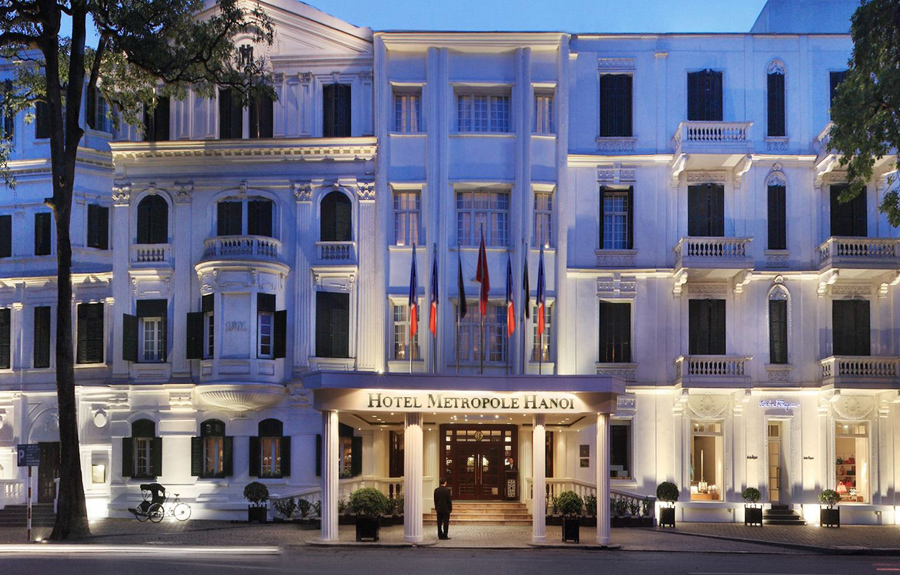
Nice little hotel in the heart of Hanoi
Did You Know? - Sofitel Legend Metropole Hanoi is a 5 star historic luxury hotel built in 1901 in the French colonial style. It is located at 15 Ngo Quyen Street in Hanoi, Vietnam. The hotel has a rich history and a century long tradition of welcoming ambassadors, writers, heads of state and entertainers including Charlie Chaplin, Jane Fonda, George H. W. Bush, François Mitterrand, Isabelle de Valvert, Jacques Chirac, etc.
Sofitel Metropole has been chosen to be the Best hotel in Vietnam and one of the only two from this country entering Best hotels throughout the World by Condé Nast Traveler Magazine (2007).
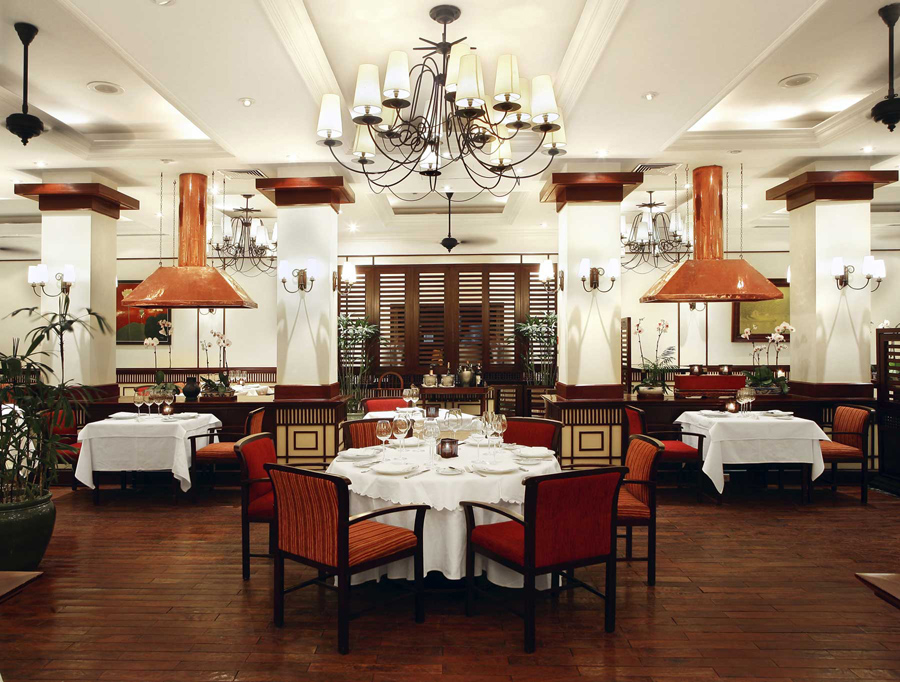
Hanoi Kids

Energy? Yup!
Did You Know? - Hanoikids, established in 2006, is known as a student - run organization based in Hanoi, Vietnam. By voluntarily taking city tours in Hanoi, we hope to bring to travellers from all over the world an insight into our culture, tradition and beautiful sight-seeings. Each individual can explore their full potential through cross-cultural experiences and extracurricular activities.
February 19th - Seeing The City

Interesting telephone and power poles
Around Hoan Kiem Lake
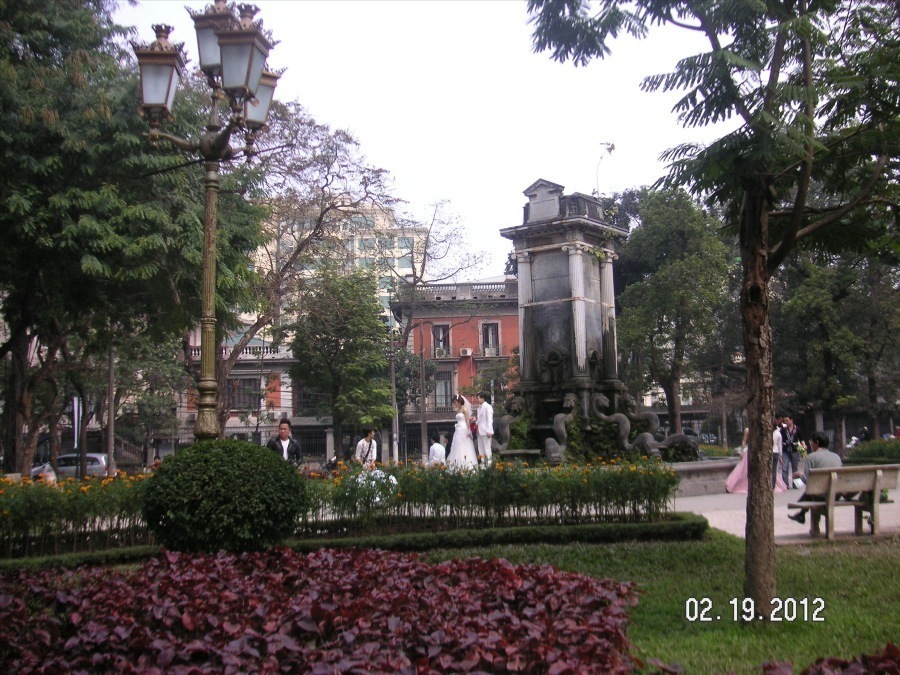
The park near the hoyel was quite nice

It happens everywhere....

A wedding in the park

Pedi-cab (Ricksha)
Did You Know? - The cycle rickshaw is a small-scale local means of transport; it is also known by a variety of other names such as bike taxi, velotaxi, pedicab, bikecab, cyclo, becak, trisikad, or trishaw or, simply, rickshaw which also refers to auto rickshaws, and the, now uncommon, rickshaws pulled by a person on foot. Cycle rickshaws are human-powered, a type of tricycle designed to carry passengers in addition to the driver. They are often used on a for hire basis. Cycle rickshaws are widely used in major cities around the world, but most commonly in cities of South, Southeast and East Asia.
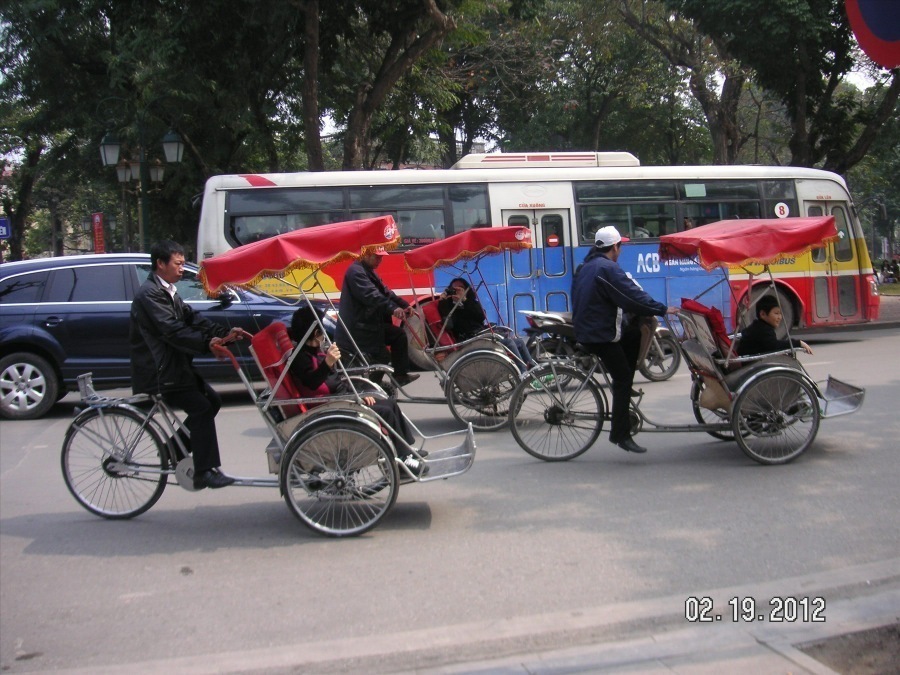
Just a few.... Like everywhere


Everybody loves a parade

Hoan Kiem Lake

Not so small from the air...
Did You Know? - Hoan Kiem Lake ( Vietnamese : Hồ Hoàn Kiếm, meaning "Lake of the Returned Sword" or "Lake of the Restored Sword", also known as Hồ Gươm - Sword Lake) is a lake in the historical center of Hanoi , the capital city of Vietnam . The lake is one of the major scenic spots in the city and serves as a focal point for its public life.

Turtle Tower in the middle of the lake
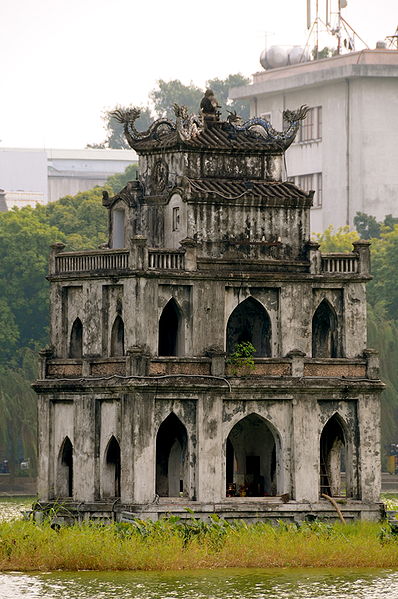
Did You Know? - The tower was erected on the Turtle islet, the former fishing site under king Le Thanh Tong.[1] Under the Restored Le Dynasty (17th and 18th centuries), the Trinh Lords had Ta Vong Temple built on the islet, which disappeared during the Nguyen Dynasty.
After the French conquered the Hanoi Citadel, most of the population around the lake fled away. Vietnamese officials also fled their offices. There stayed only Nguyen Ngoc Kim, who was the mediator between the French troops and the Vietnamese.
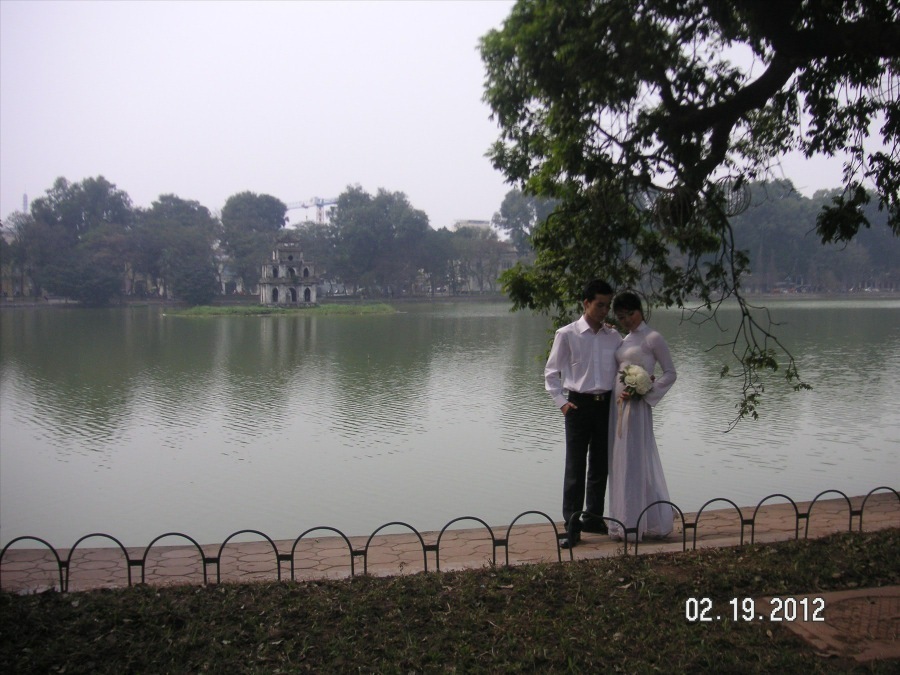
The lake has a great history
Did You Know? - According to the legend, emperor Lê Lợi handed a magic sword called Heaven's Will which brought him victory in his revolt against the Chinese Ming Dynasty back to the Golden Turtle God (Kim Qui) in the lake and hence gave it its present name (the lake was formerly known as Luc Thuy meaning "Green Water"). The Turtle Tower (Thap Rùa) standing on a small island near the centre of lake is linked to the legend.

No swimming
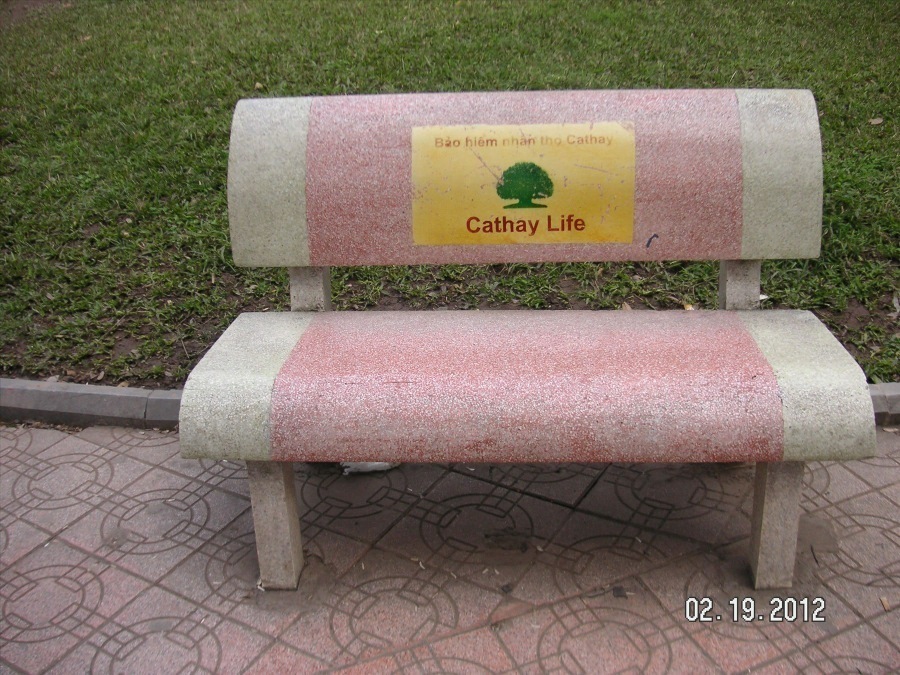
Yup! Life insurance in Vietnam

To The Gnoc Son Temple Which Is On An Island In The Lake
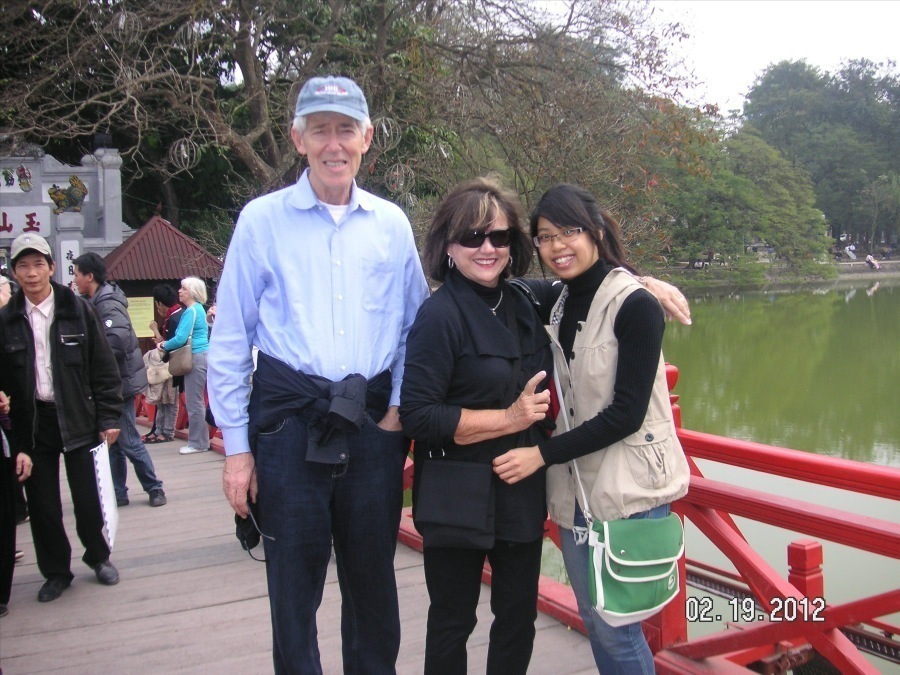
Our guides take us across the bridge

Nice walk across the bridge to the temple
Did You Know? -A t the northern end of Hoan Kiem Lake is a small island with the Ngoc Son ("Jade Mountain") Temple. The temple supposedly dates back to the fourteenth century, although the current buildings were probably built in the eighteenth century. The temple is dedicated to the hero Tran Hung Dao, who defeated a force of 300,000 sent to invade Vietnam by the Mongol Emperor Kublai Khan. There are also altars dedicated to the scholars Van Xuong and La To, the patron saint of physicians.

Are you ready for the temple??
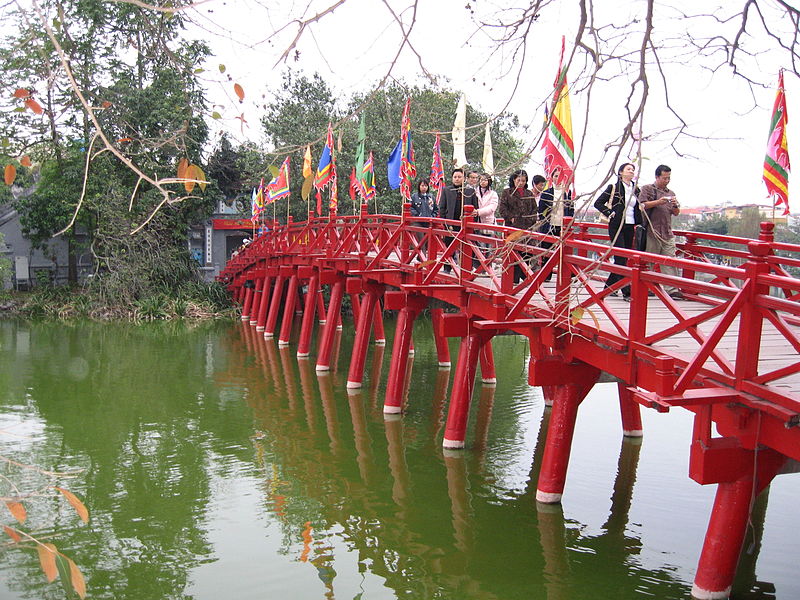
The Huc Bridge
to the Temple
Did You Know? - The island and its temple are reached by a red wooden bridge called The Huc, which translates to "Flood of Morning Sunlight". Either end of the bridge is guarded by large stone gateways with Chinese characters written on them.

Relaxing for a few minutes
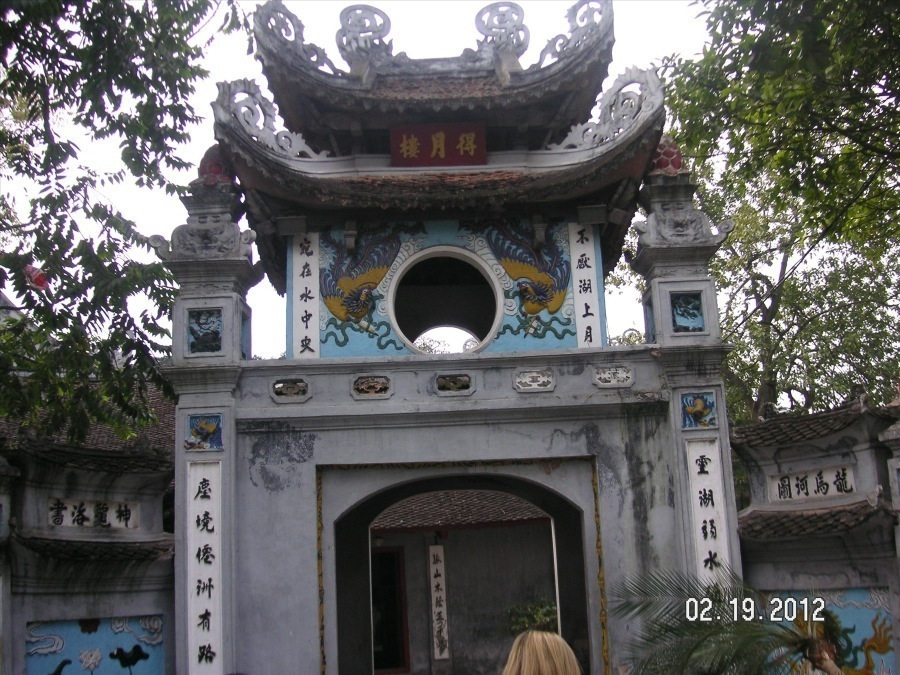
Gnoc Sun Temple on an island in the lake
Did You Know? - The temple consists of a main building housing the altars as well as some shops, along with a pavilion in front of the altars. A large bronze brazier sits in front of the main hall, holding burning incense sticks. Inside is the first of two altars. On it sit the two scholars along with several other deities. Behind this altar is the high altar dedicated to the hero Tran Hung Dao. In a room off to the side of the front altar is a preserved specimen of the lake's giant tortoise.

Entrance to the Temple
Did You Know? - Ngoc Son Temple (Đền Ngọc Sơn), or Temple of the Jade Mound, is located on a small islet at Hoan Kiem Lake in the City of Hanoi . The temple was founded in the 14th century but most of its current structures were built in the 18th century.
Ngoc Son Temple was built to commemorate a few Chinese and Vietnamese legends, including famous Vietnamese General Trần Hưng Đạo who twice led the Vietnamese troops to fence off the mighty Yuan invaders in the 13th century.
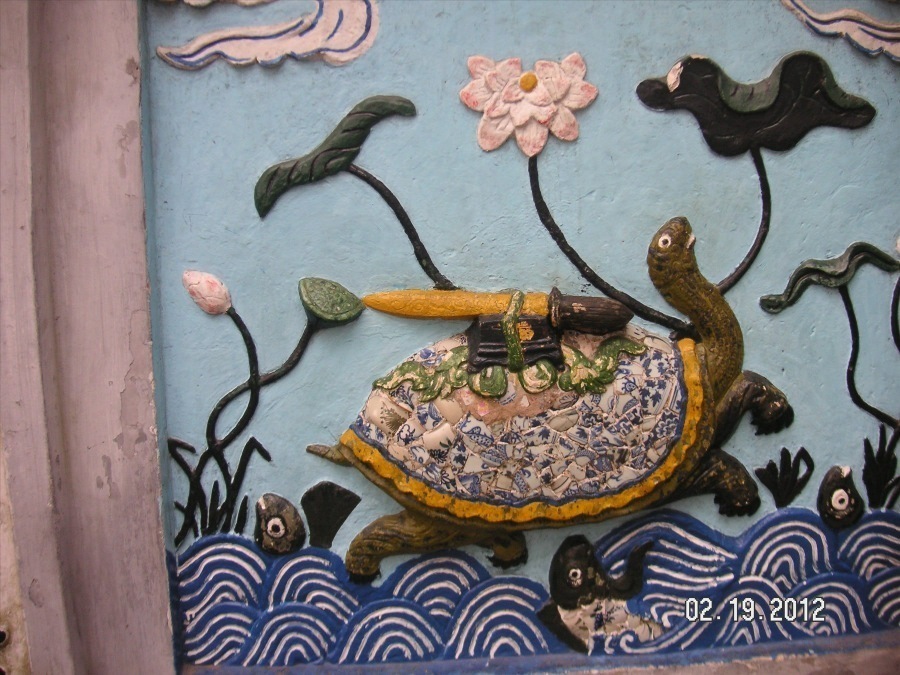
Loads of details in the walls
and a tribute to the Turtle which lives ther
Did You Know? - To the left of the main temple is a side room containing the preserved body of a giant soft backed turtle (rafetus leloii). This turtle is 2.1 meters long, 1.2 meters wide, and weighed 250kg. It was found in 1968 and was said to be 500 years old. This gives credence to the legend about the giant turtle, which took the magic sword of Le Loi in the 15th century.
One or more large turtles still inhabit the lake. At any time of the day people will be seen looking into its waters, hoping to catch sight of a giant turtle, as it is considered a sign of good luck to glimpse the head rising above the water. Smaller turtles are also seen. These have been set free to bring good fortune to the giver.

Monuments everywhere

Magnificent interiors

Buddist monument...
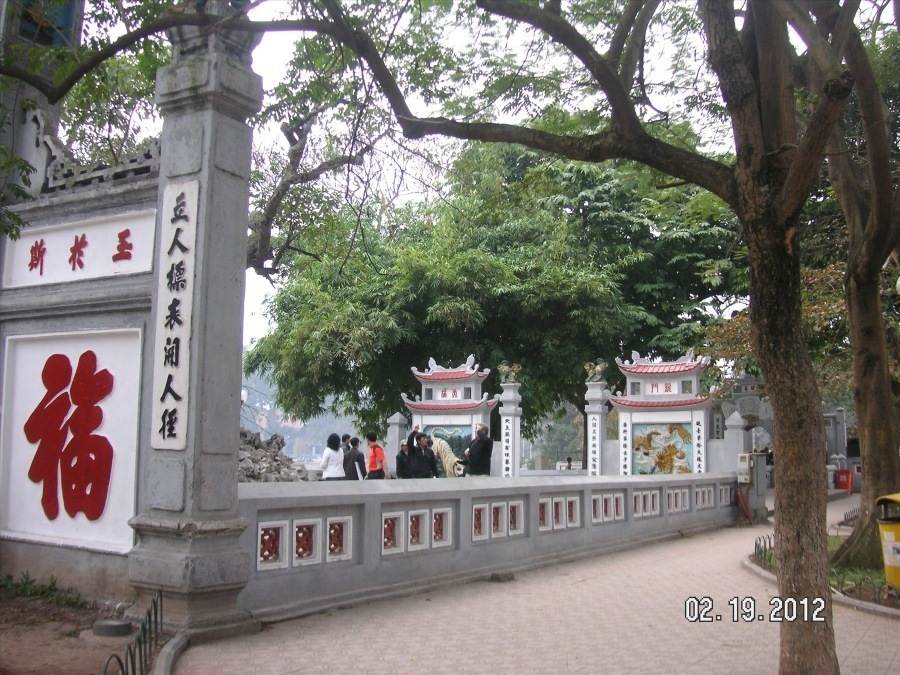
Walking the grounds
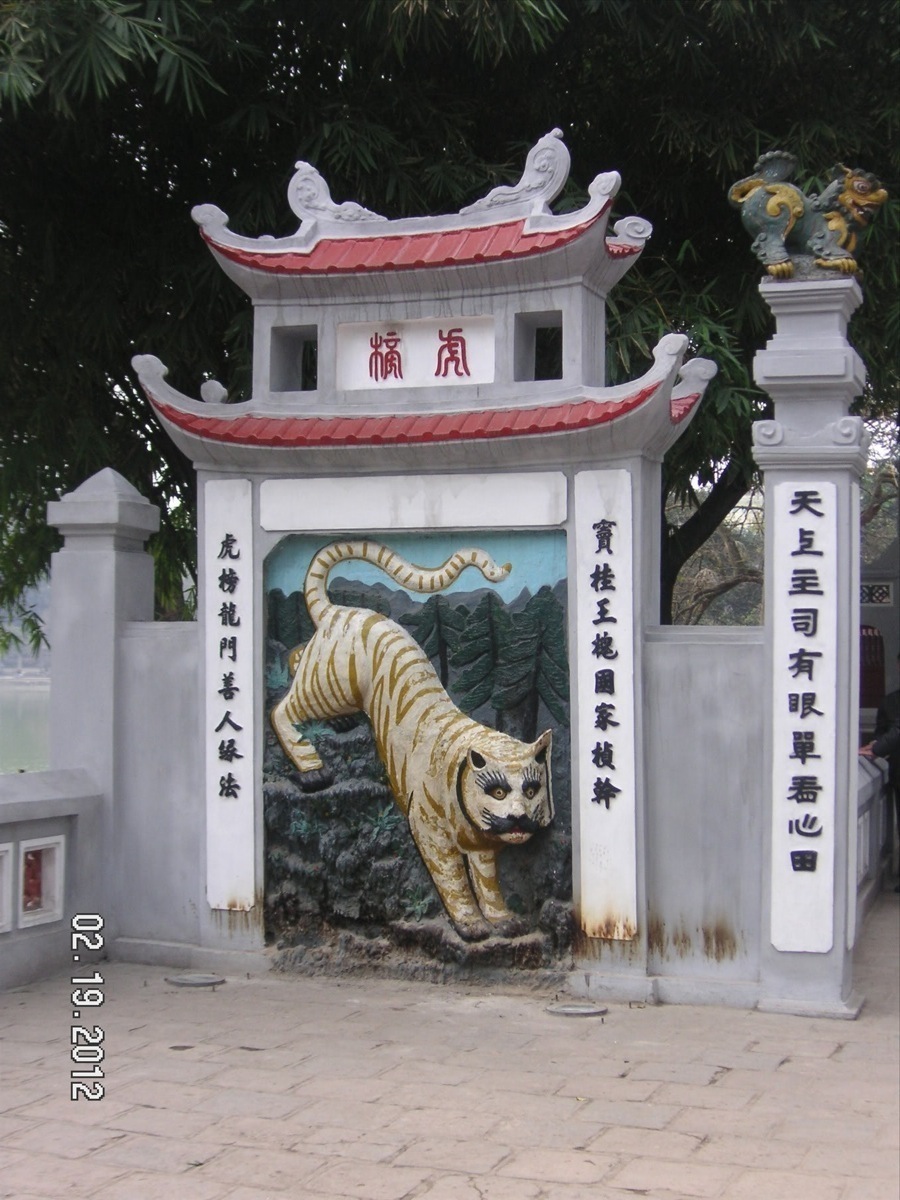
Shrines everywhere complete with Groucho the Cat
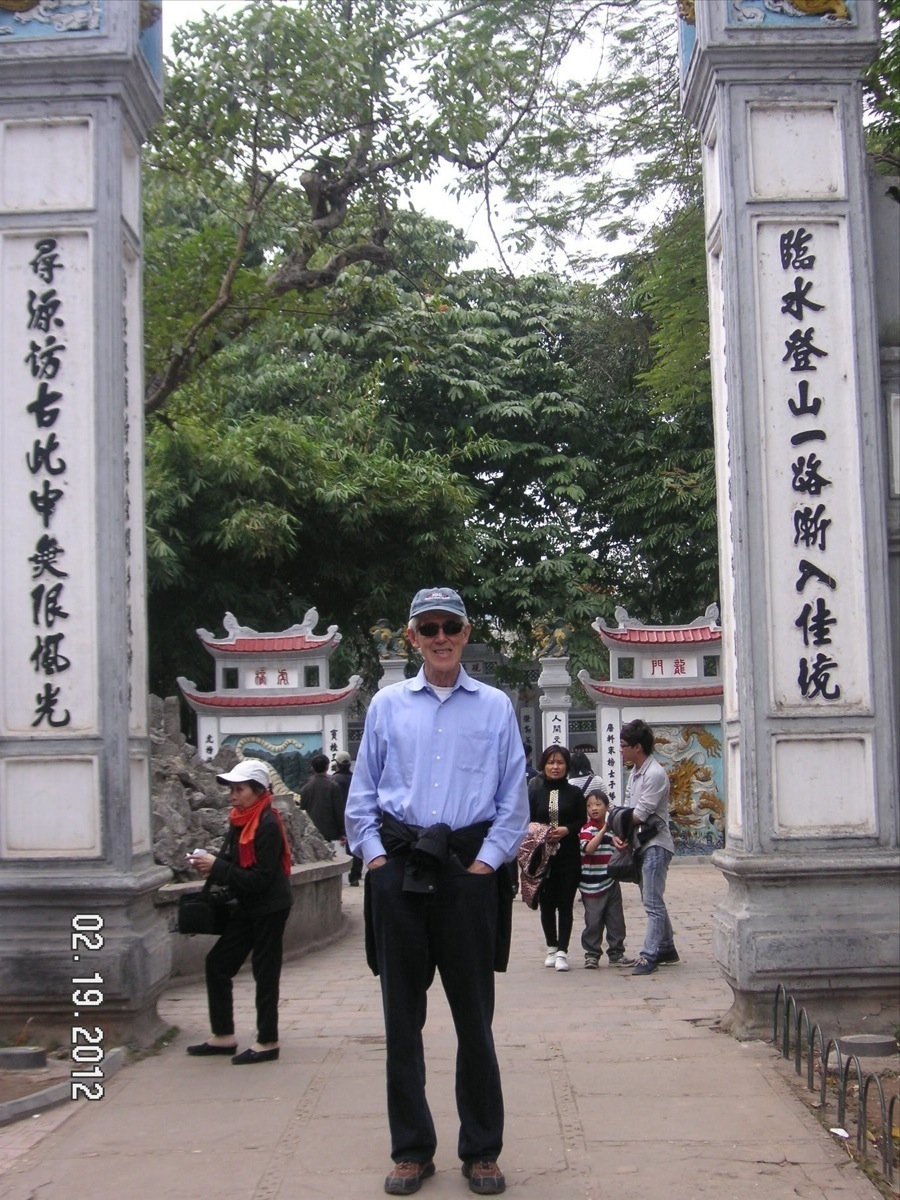
Tom in his Holluwood disguise
Off We Go Through The Old Quarter
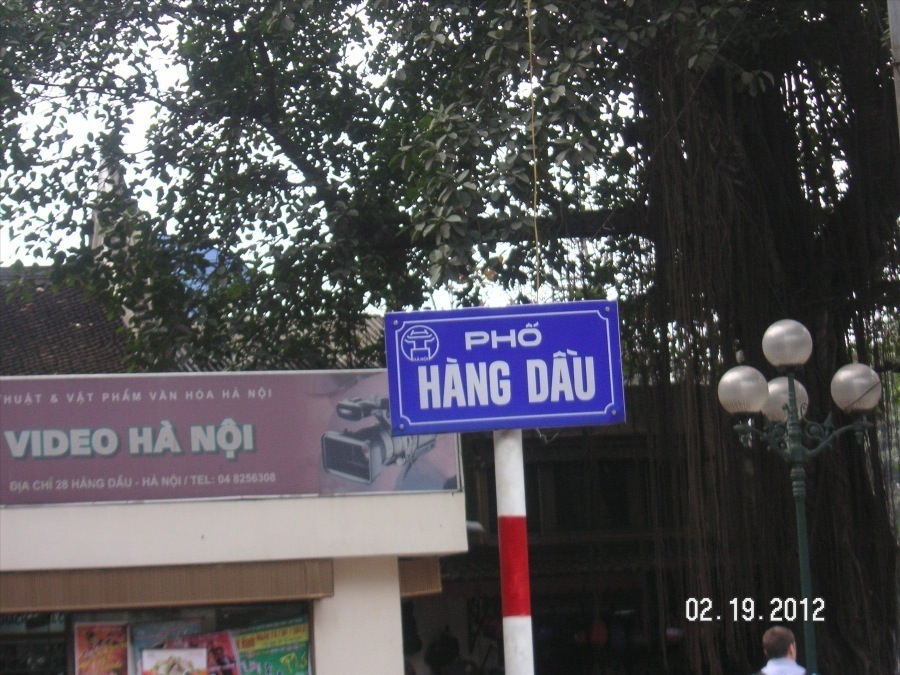
The Old Quarter along Hang Dau Street
Did You Know? -
This virtual tour of Hang Dau Street was taken at the Old Quarter in Hanoi, Vietnam.
.The Old Quarter is Hanoi's historic heart and also the main attraction of Hanoi, not to be missed on a tour to Vietnam. Steeped in history, it is always pulsating with life, bubbling with commerce, buzzing with motorbikes and rich in exotic scents.
The streets are narrow and congested, and crossing the road is an art form, but remember to look up as well as down, as there is some elegant old architecture in and among the chaos. Hawkers pound the street, sizzling and smoking baskets hiding a cheap meal for the locals. Pho stalls and bia hoi dens hugs every corner, resonant with sound of gossip and laughter. Modern yet medieval, there is no better way to spend time in Hanoi than walking the streets, soaking up the sights, sounds and smells.

Zooming around the streets

TIme to dine....
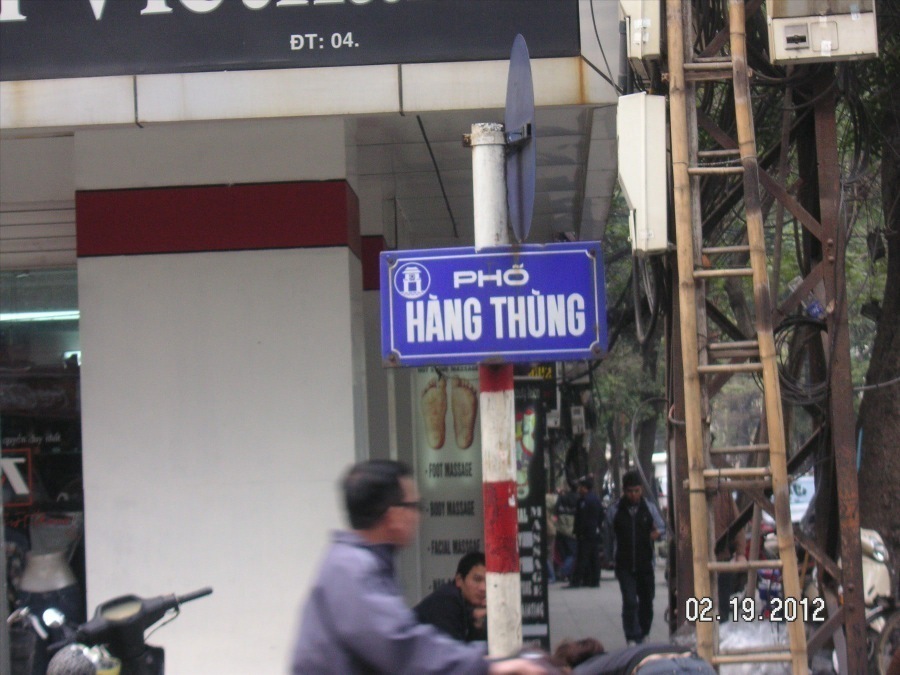
Hang Thung Street, one of the business street of the Hanoi Old Quarter, just walking distance to the famous Hoan Kiem Lake.

Our guides
... Sometimes it is good to be short
...Drinking "Egg Coffee"

Done.... Time to explore
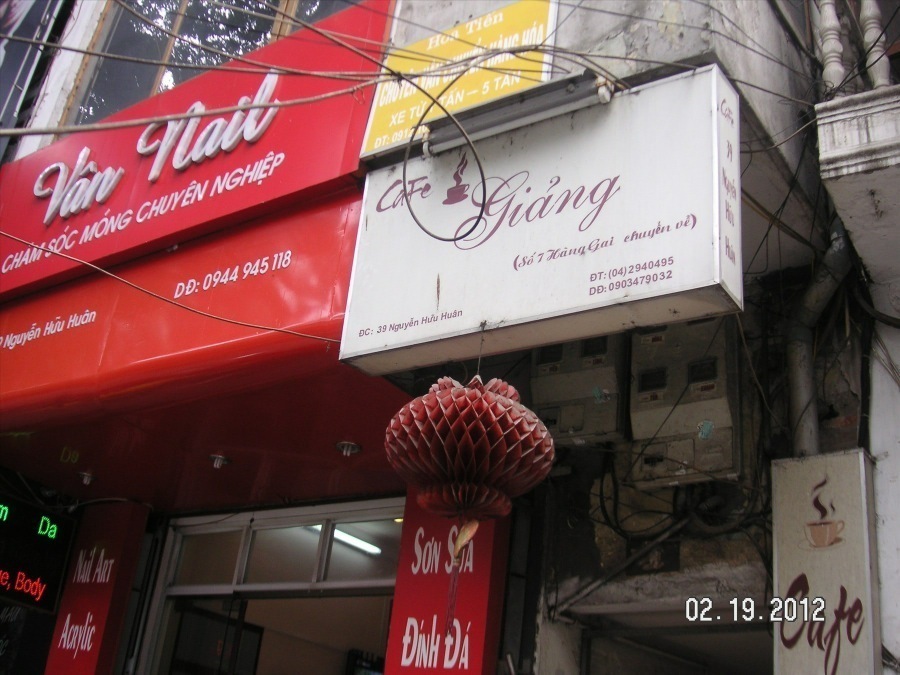
Yes.... Time to get the nails done

More stores than you can imagine

Crowded seems like a good description

Spagetti on a pole

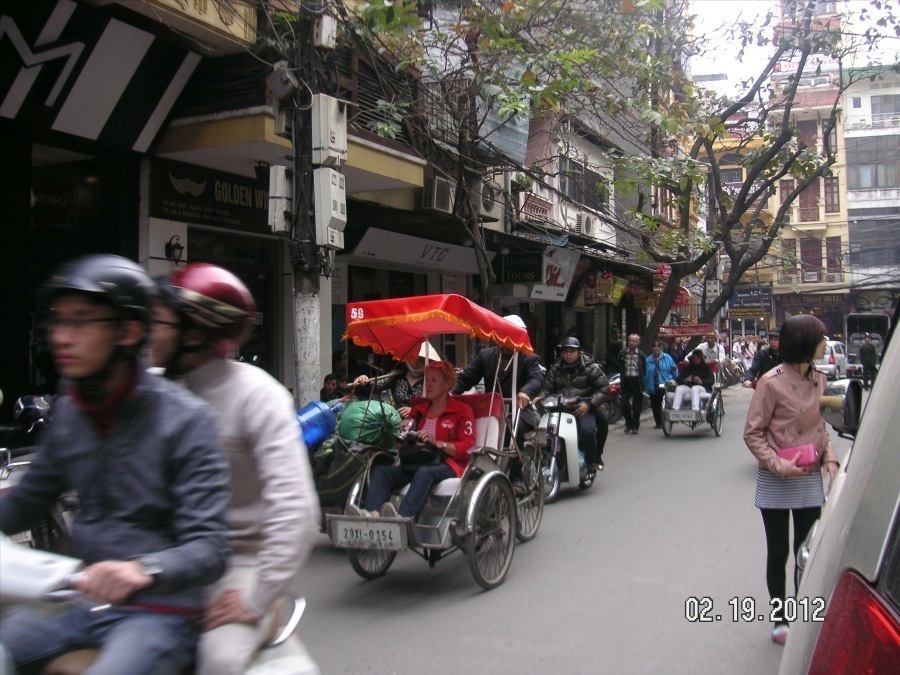
Everyone is mobile one way or another

Check the air conditioners... Tom could have a job over here

A local Buddist Temple
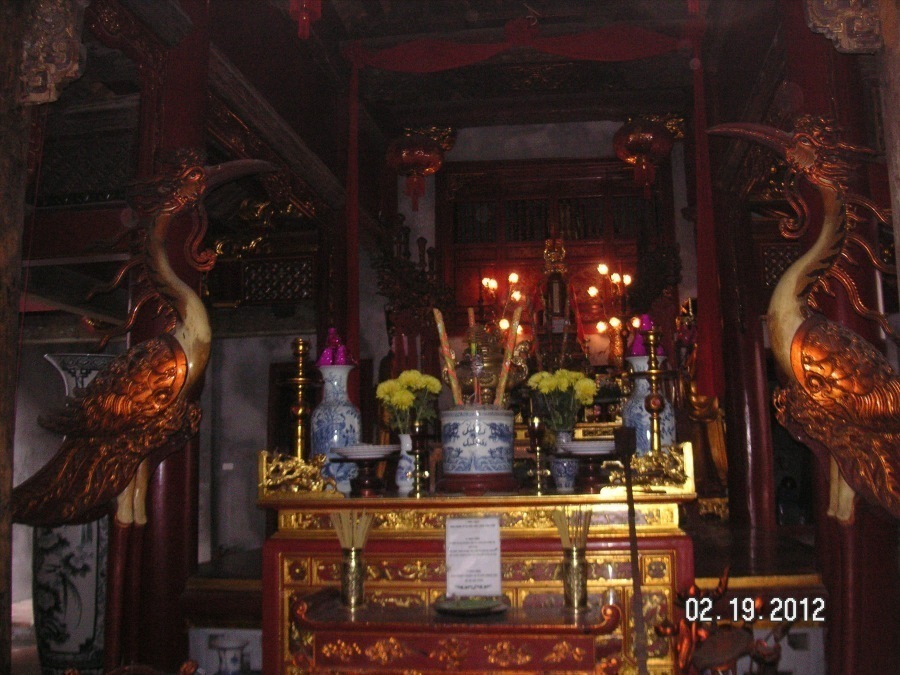

Local police station... All seems peaceful...

Not for the faint of heart
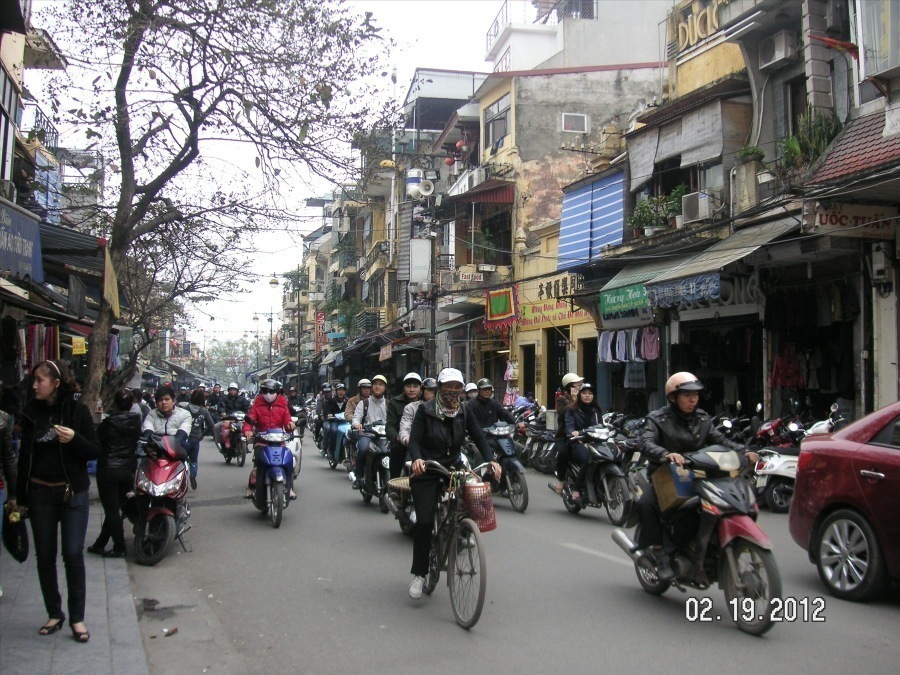
Did we say smog???
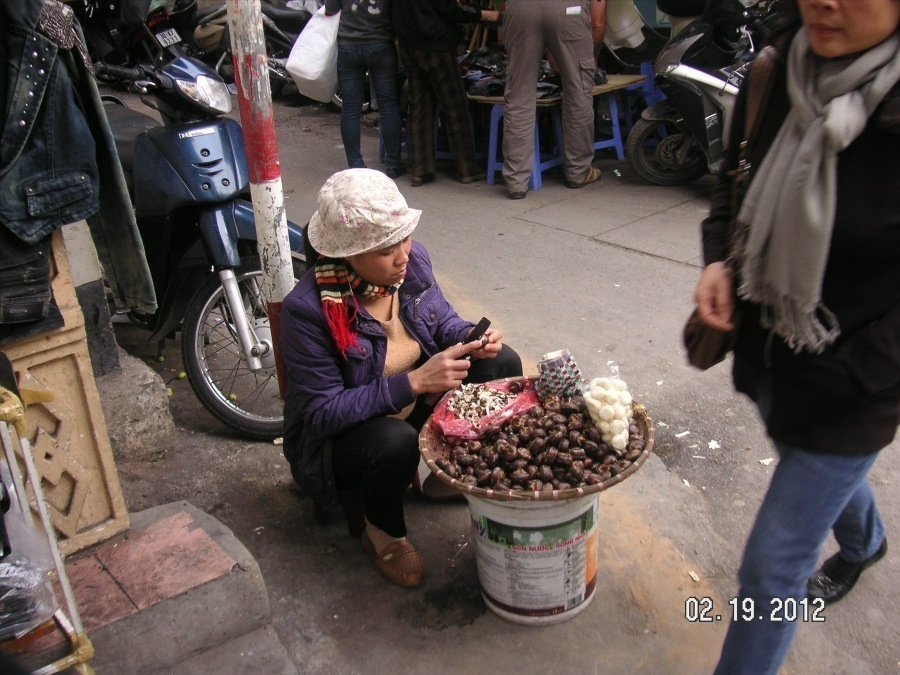
Food everywhere...

Visiting the sights
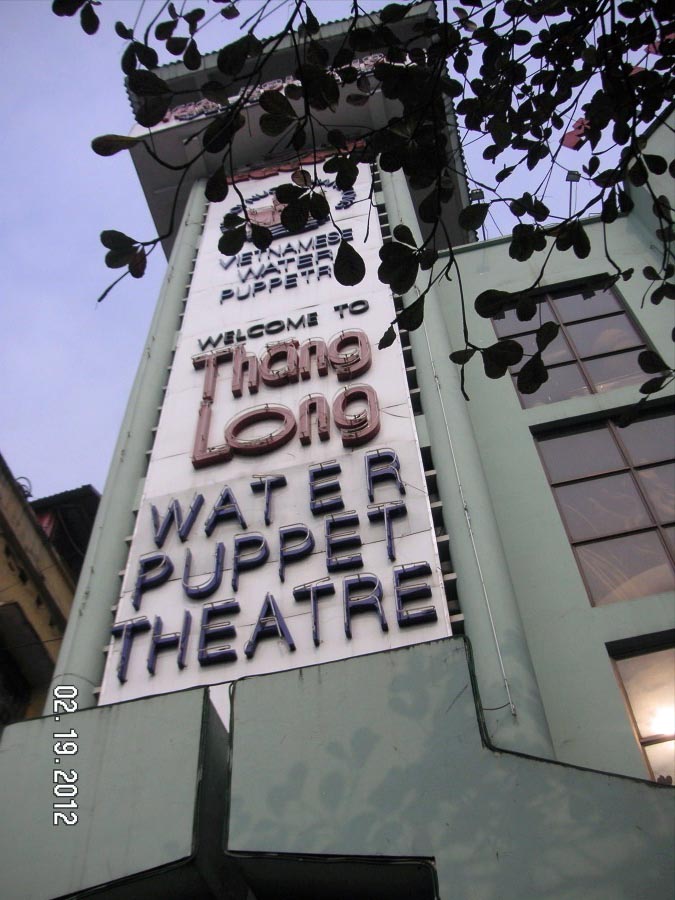
Famous world wide
Did You Know? - Water puppetry (Vietnamese: Múa rối nước, lit. "puppets that dance on water") is a tradition that dates back as far as the 11th century CE when it originated in the villages of the Red River Delta area of northern Vietnam. Today's Vietnamese water puppetry is a unique variation on the ancient Asian puppet tradition.
The puppets are made out of wood and then lacquered. The shows are performed in a waist-deep pool. A large rod supports the puppet under the water and is used by the puppeteers, who are normally hidden behind a screen, to control them. Thus the puppets appear to be moving over the water. When the rice fields would flood, the villagers would entertain each other using this form of puppet play.
In ancient Vietnam, the rural Vietnamese believed that spirits controlled all aspect of their lives, from the kitchen to the rice paddies. The Vietnamese devised water puppetry as a way to satisfy these spirits, and as a form of entertainment, using what natural medium they could find in their environment. In ancient times, the ponds and flooded rice paddies after harvest were the stage for these impromptu shows.
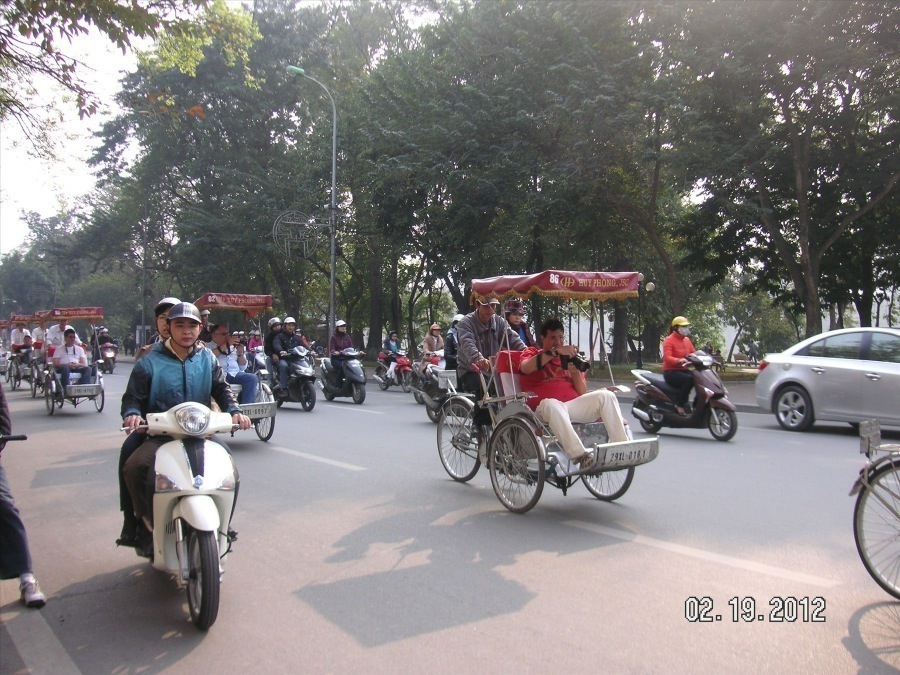
Off and running... Again....

Follow the leader
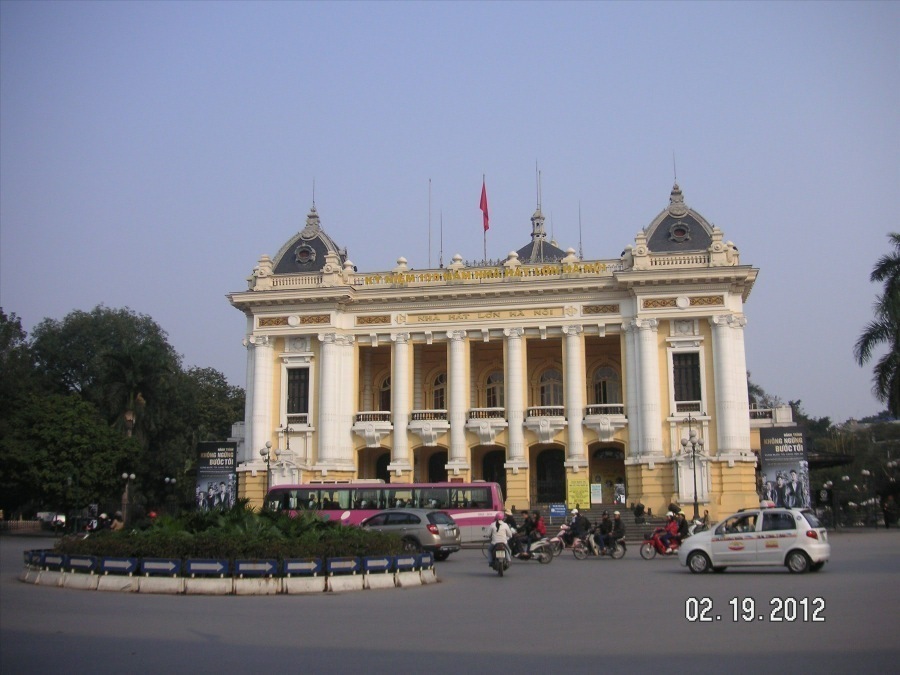
The Hanoi Opera House

It's been around for a while.... Circa 1901
Did You Know? - The Hanoi Opera House (Vietnamese: Nhà hát lớn Hà Nội, French: Opéra de Hanoï) is an opera house in central Hanoi, Vietnam. It was erected by the French colonial administration between 1901 and 1911. It was modeled on the Palais Garnier, the older of Paris's two opera houses, and is considered to be one of the architectural landmarks of Hanoi.
The opera house is described in the memoirs of Blanche Arral who performed in the new Hanoi Opera House in 1902 while waiting for the 1902 Exposition of Hanoi to open.
The Hanoi Opera House provides the name for the nearby Hilton Hanoi Opera Hotel which opened in 1999 and which, for historical reasons associated with the Vietnam war, was not named the Hanoi Hilton .
The Saigon Opera House is a smaller structure built around the same time.

Civilization...

Back toward the hotel and a good nights sleep

Almost home
for a great meal and a cocktail... or two....
Did You Know? - Vietnamese cuisine is the cooking and baking of various foods and beverages developed in Vietnam. Regular ingredients include fish sauce, shrimp paste, soy sauce, rice, fresh herbs, fruits and vegetables. Vietnamese recipes utilize lemongrass, mint, Vietnamese mint, long coriander and Thai basil leaves. Traditional Vietnamese cooking is greatly admired for its fresh ingredients, minimal use of oil, and reliance on herbs and vegetables. Vietnamese food is often ranked as one of the healthiest cuisines in the world.
The most common meats used in Vietnamese cuisine are fish, chicken, pork, beef, and various kinds of seafood. The Vietnamese also have a strong vegetarian tradition influenced by Buddhist values.
February 22 - Day Two in Vietnam, See The Ha Long Bay
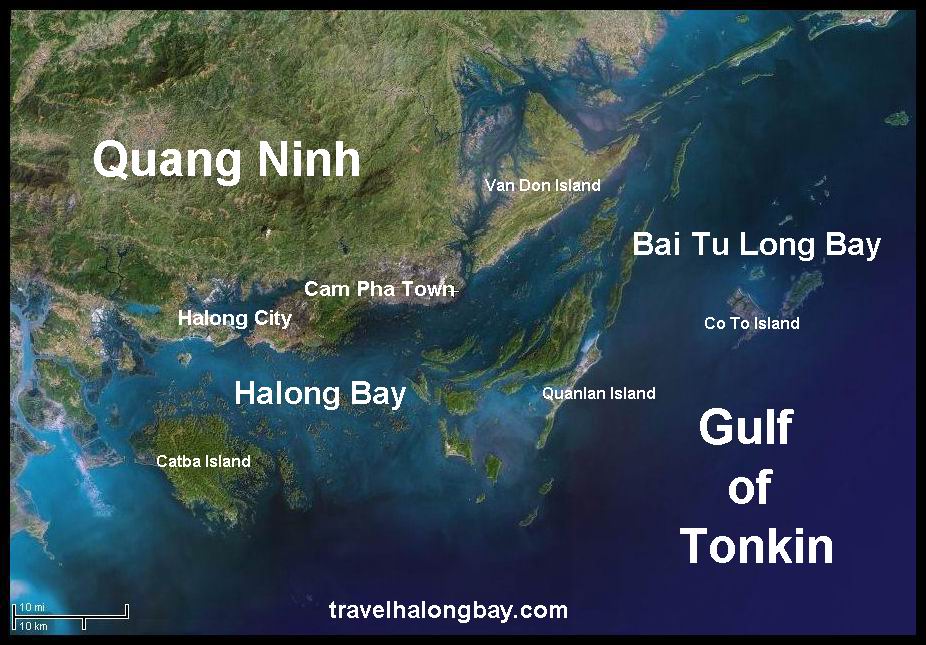
Did You Know? - Ha Long Bay (Vietnamese: Vịnh Hạ Long, About this sound listen, literally: "descending dragon bay"; 下龍灣, Hán tự:下龍灣) is a UNESCO World Heritage Site, and a popular travel destination, located in Quang Ninh province, Vietnam. Administratively, the bay belongs to Hạ Long City, Cẩm Phả town, and part of Van Don district.
The bay features thousands of limestone karsts and isles in various sizes and shapes. Ha Long Bay is a center of a larger zone which includes Bái Tử Long bay to the northeast, and Cát Bà islands to the southwest. These larger zones share similar geological, geographical, geomorphological, climate, and cultural characters.

Did You Know? - Ha Long Bay has an area of around 1,553 km2, including 1,960–2,000 islets, most of which are limestone. The core of the bay has an area of 334 km2 with a high density of 775 islets. The limestone in this bay has gone through 500 million years of formation in different conditions and environments. The evolution of the karst in this bay has taken 20 million years under the impact of the tropical wet climate. The geo-diversity of the environment in the area has created biodiversity, including a tropical evergreen biosystem, oceanic and sea shore biosystem. Ha Long Bay is home to 14 endemic floral species and 60 endemic faunal species.
Historical research surveys have shown the presence of prehistorical human beings in this area tens of thousands years ago. The successive ancient cultures are the Soi Nhụ culture around 18,000–7000 BC, the Cái Bèo culture 7000–5000 BC and the Hạ Long culture 5,000–3,500 years ago. Hạ Long Bay also marked important events in the history of Vietnam with many artifacts found in Bài Thơ Mout, Đầu Gỗ Cave, Bãi Cháy


We're movin' movin'


We're in the country now




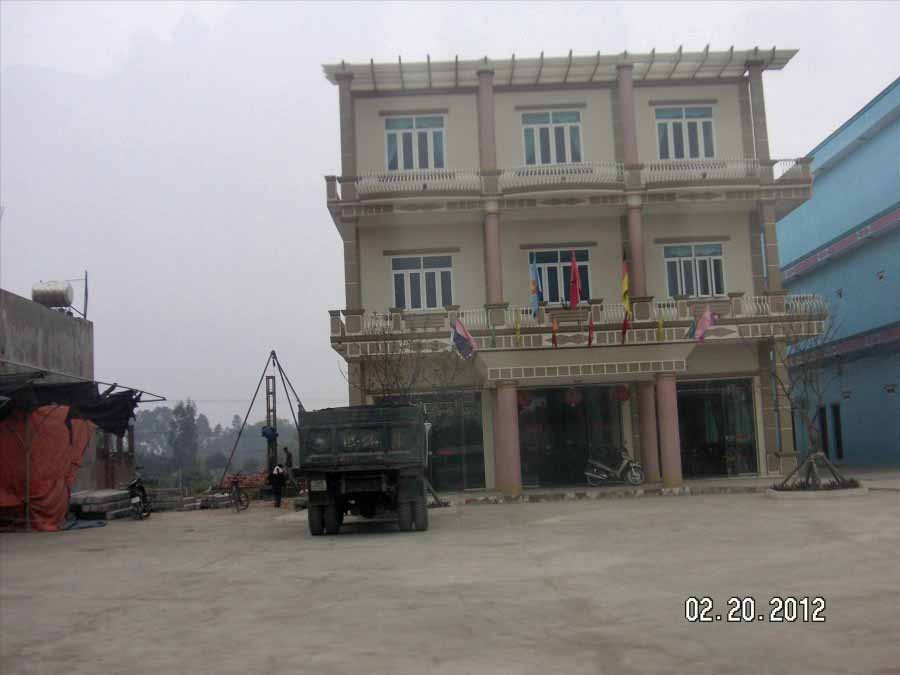

Rice paddies everywhere
Did You Know? - A paddy field is a flooded parcel of arable land used for growing rice and other semiaquatic crops. Paddy fields are a typical feature of rice farming in east, south and southeast Asia. Paddies can be built into steep hillsides as terraces and adjacent to depressed or steeply sloped features such as rivers or marshes. They can require a great deal of labor and materials to create, and need large quantities of water for irrigation. Flooded paddies provide an ideal environment for rice cultivation and discourage the growth of many weeds.
The Oxen and water buffalo are one of the most important working animals adapted for life in wetlands, and is used extensively in paddy field farming.
The word "paddy" is derived from the Malay word padi, rice plant. [


Vector Control anywhere??
Did You Know? - Vector control is any method to limit or eradicate the mammals, birds, insects or other arthropods which transmit disease pathogens. The most frequent type of vector control is mosquito control using a variety of strategies.

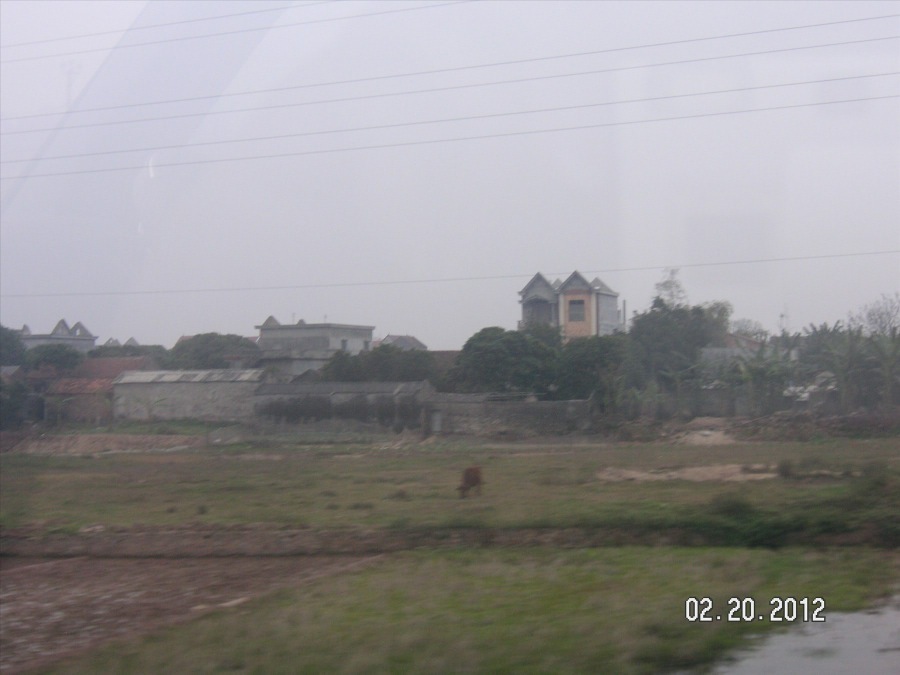

The land is well used...



Time for some art
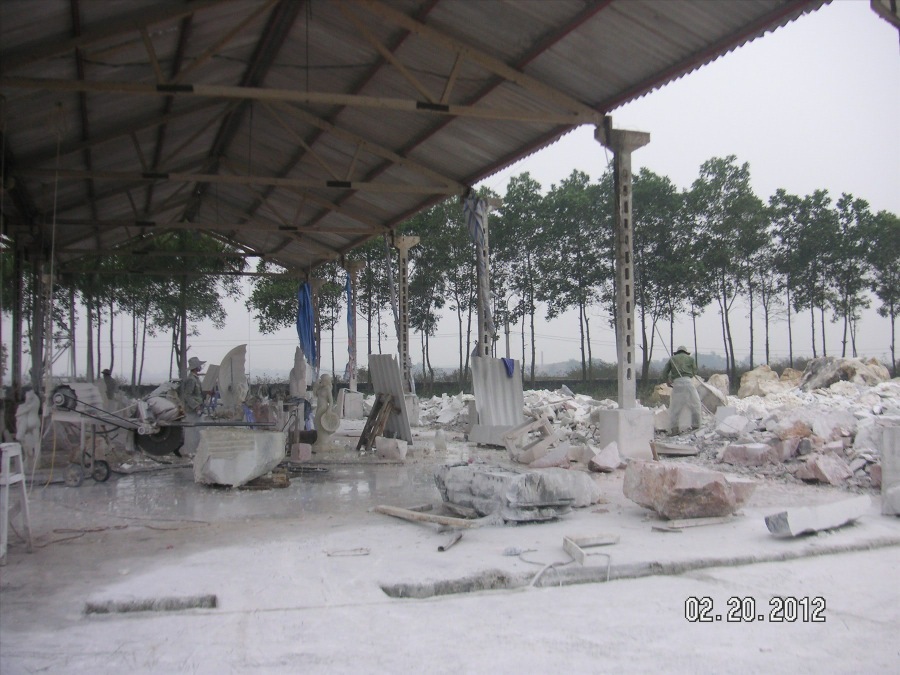
Statuary

What you need for your front yard....

Almost there...


The bay was a bit foggy and overcast this fine day...

TIme for a cruise
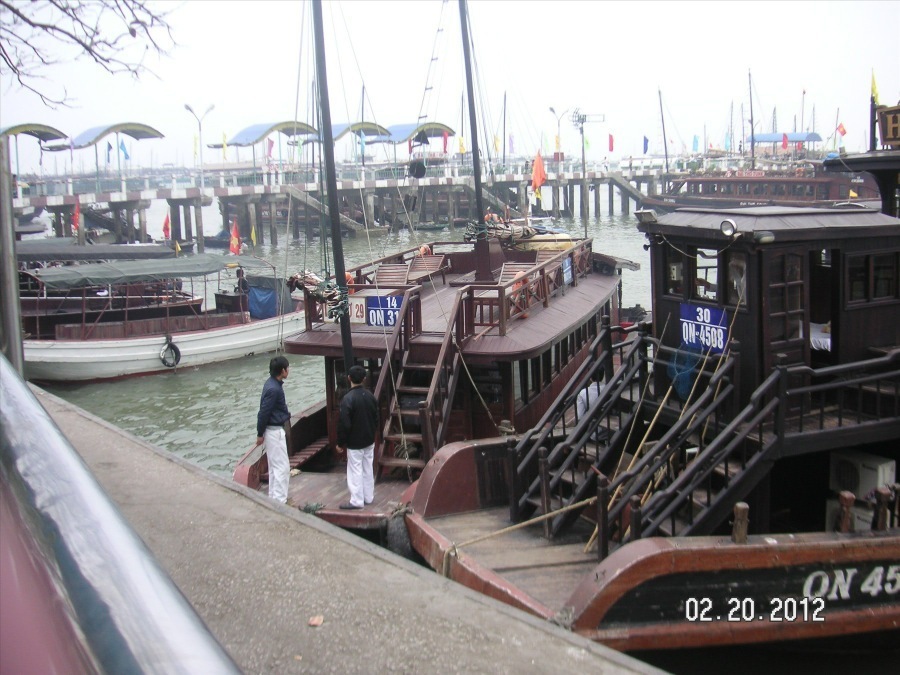

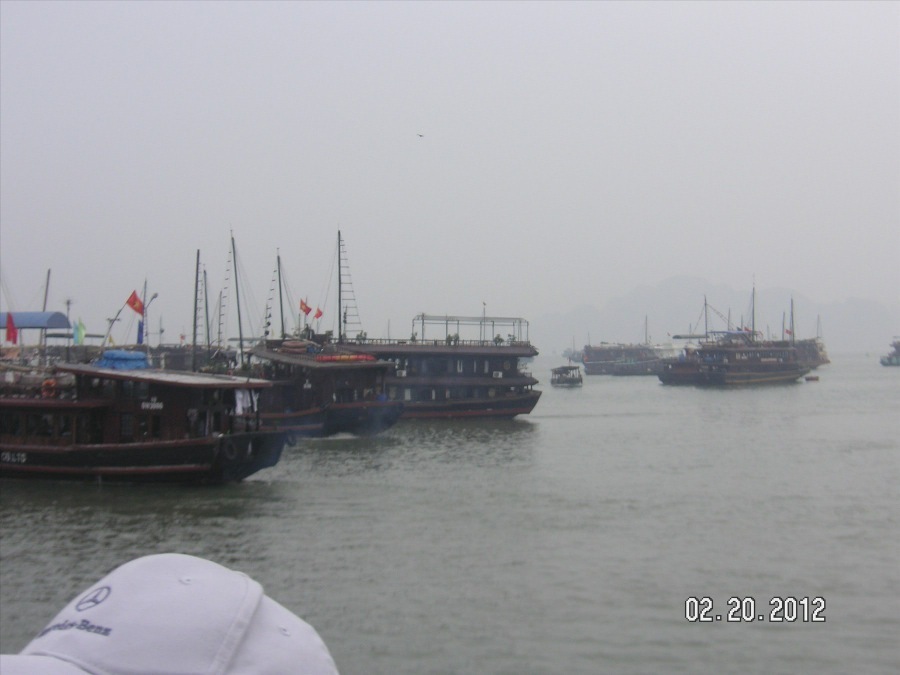
The climate of the bay is tropical, wet, sea islands, with two seasons: hot and moist summer, and dry and cold winter.
